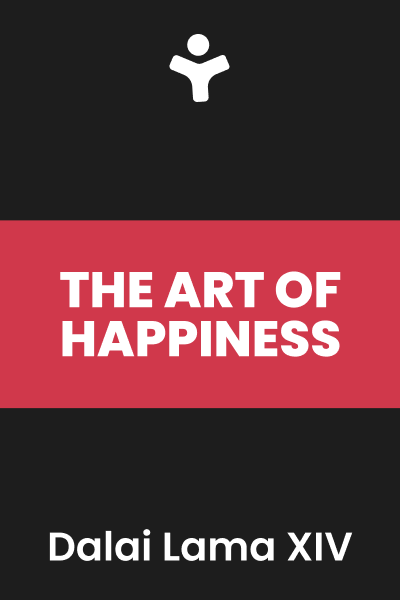
The Art of Happiness: A Handbook for Living
by Dalai Lama XIVMost of us are looking for a way to be happier, but we just can’t find it. Luckily, in the Art of Happiness, the Dalai Lama tells us exactly how to increase our happiness levels long-term, while also developing ourselves to become more wholesome, rounded people. The Dalai Lama’s advice comes in the form of interviews conducted by psychiatrist Howard Cutler. This book combines spirituality with science to give you a broad understanding of how happiness can be achieved.
We have compiled the Dalai Lama’s advice into several actionable steps that you can practice from the comfort of your own home. Most of the actions are for you to increase your own happiness levels, but there are also actions for problem solving, emotional control, and improving your interpersonal relationships (of course, all these actions will have a positive effect on your happiness too!) By integrating even two or three of these actions into your daily life, you will notice a significant positive change in your mood and quality of life.
The Purpose of Life
“I believe that the very purpose of our life is to seek happiness.”
Happiness is determined more by one’s state of mind than by external events. Whether you feel happy or unhappy at any given moment is determined by how you perceive your situation and how satisfied you are with what you have. This is the reason why someone who is HIV positive can feel overall happy, and someone who is extremely financially successful can feel overall unhappy.
Change your state of mind—look at the positive side of life and appreciate what you have—and you will begin to be happier. One way to do this is to follow your positive desires. Remember, following negative desires leads to greed, which in turn leads to unhappiness, frustration, confusion, etc., as soon enough you will desire something you cannot have. So, follow your positive desires and don’t be greedy, and you will achieve contentment and happiness.
Actions to take
Human Warmth and Compassion
“If you wish to overcome that feeling of isolation and loneliness, your underlying attitude makes a tremendous difference.”
Loneliness is a state of mind, one that can be changed when you make the decision to approach others with a sense of compassion. This sense of compassion will help you view others around you in a positive light and therefore opens you up to the possibility of forming a relationship with them. Alternatively, if you approach others with apprehension or fear, you give yourself no chance of connecting with them.
Actions to take
Transforming Suffering
“No one lives free from suffering and loss.”
Although pain and suffering are a universal human experience, we often find ourselves unequipped to deal with it. To cope, we may resort to substances such as drugs and alcohol, fall into a pit of denial, project our problems onto others, etc. However, all of these methods have one thing in common - they are ineffective in solving the problem of pain and suffering.
When confronted with suffering, the most normal reaction is to reject it, to think “this isn’t fair”, “this isn’t supposed to happen”, etc. However, if you acknowledge that suffering is a natural part of life and face your problems head on, you will be able to accept your suffering and move on.
Actions to take
Overcoming Obstacles
“No matter what behavior you are trying to change, no matter what particular goal or action you are directing your efforts towards, you need to start by developing a strong willingness or wish to do it.”
One of the biggest obstacles we must overcome is our own emotions. Negative emotions such as anger, hatred, and anxiety often hold us back from feeling happiness and developing into a better person. When these emotions are processed in an appropriate manner, it becomes a lot easier to overcome them.
Once these emotions are overcome, you will be able to gain greater awareness of your problems and better understand what you need to change in order to fix them.
Actions to take
Don’t just read. Act.


